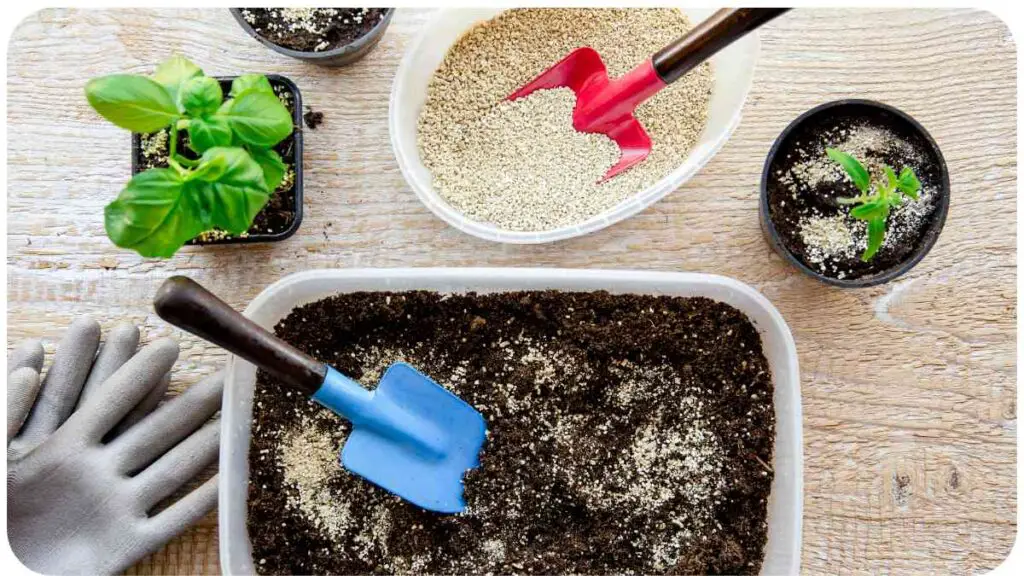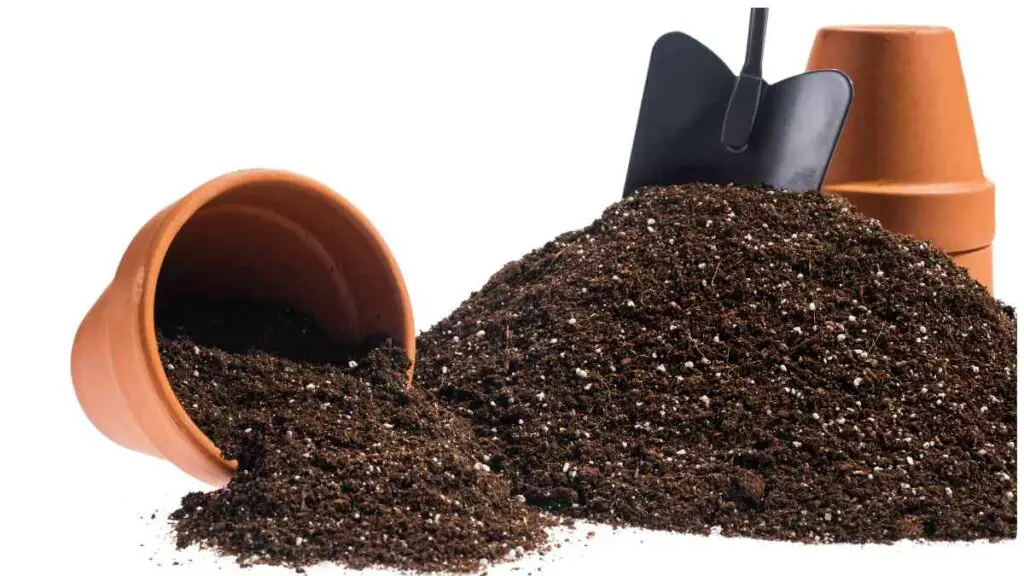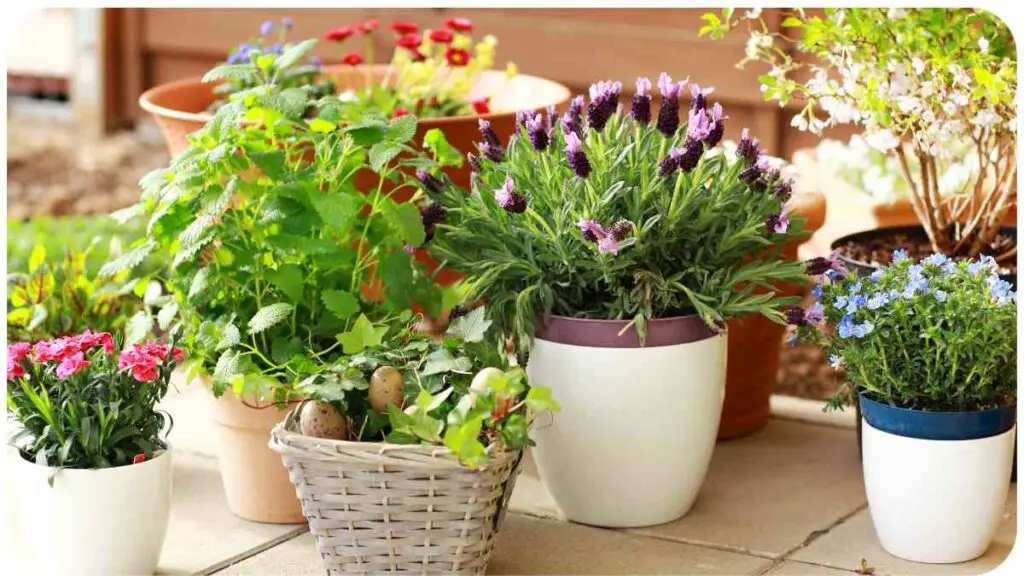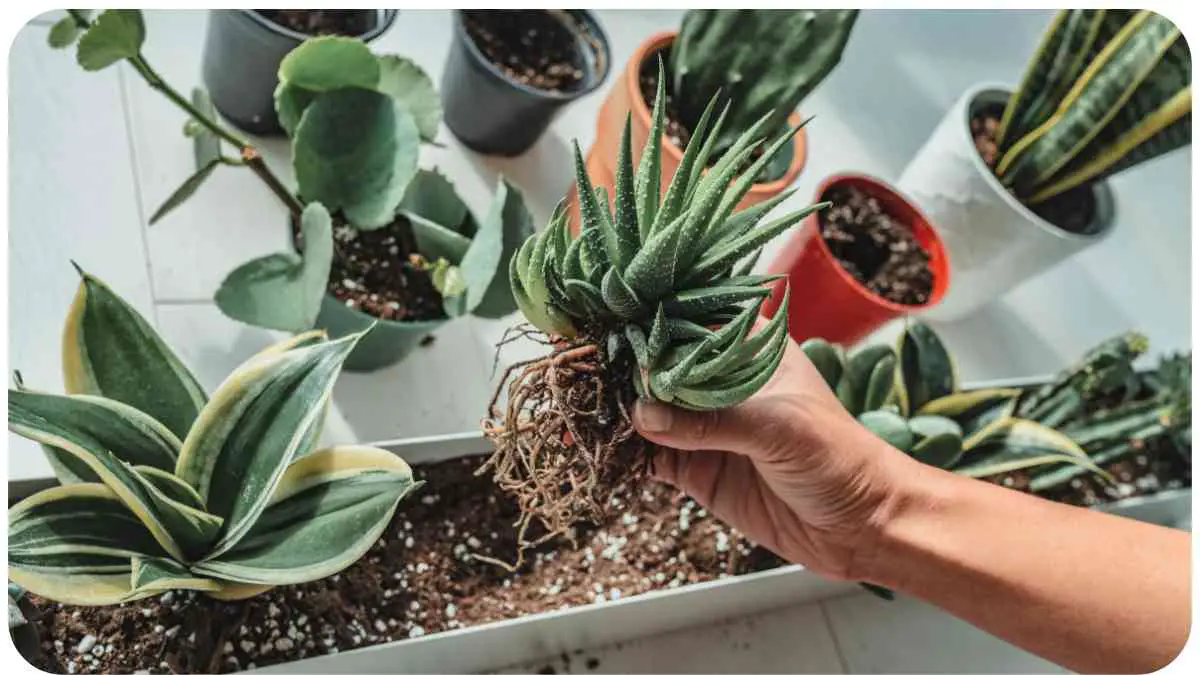Plumeria, also known as frangipani, is a stunning tropical plant known for its vibrant, fragrant flowers. Whether you’re a seasoned gardener or a beginner, choosing the right potting mix for your plumeria is crucial for its health and growth.
In this article, we’ll delve into the intricacies of selecting the best potting mix to ensure your plumeria thrives and blooms abundantly.
| Takeaways |
|---|
| 1. Choose a well-draining potting mix specifically formulated for plumeria plants to promote healthy root development and prevent waterlogging. |
| 2. Balance moisture retention with good drainage by incorporating ingredients like perlite, peat moss, and coconut coir into your potting mix. |
| 3. Consider commercial potting mix options from reputable brands like Miracle-Gro, FoxFarm, and Espoma, or explore DIY recipes tailored to your plumeria’s needs. |
| 4. Properly pot your plumeria by selecting a suitable container, preparing the potting mix, and ensuring adequate drainage and positioning in a sunny location. |
| 5. Avoid common mistakes such as overwatering, using heavy or compacted soil, neglecting fertilization, and ignoring pest and disease control to ensure the health and vitality of your plumeria. |
2. Understanding Plumeria Potting Mix

Before we delve into specific potting mix recipes and options, let’s understand the requirements of plumeria. Plumerias are native to tropical regions and require well-draining soil to prevent root rot. Additionally, they thrive in slightly acidic soil with good aeration. Therefore, the ideal potting mix for plumeria should mimic these conditions to promote healthy root development and lush foliage.
When planning for your large potting projects, it’s essential to know how much potting soil is required. Proper measurement ensures optimal growth and resource utilization, fostering healthy plants in your garden.
Table: Components of an Ideal Potting Mix
| Component | Purpose |
|---|---|
| Perlite | Improves drainage and aeration |
| Peat Moss | Retains moisture and enhances soil structure |
| Pine Bark Mulch | Provides organic matter and aids in drainage |
| Coconut Coir | Holds moisture while maintaining good drainage |
| Perlite | Improves drainage and aeration |
| Sand | Enhances drainage and prevents compaction |
3. Components of an Ideal Potting Mix
Now that we understand the basic requirements of plumeria potting mix, let’s delve deeper into each component and its role in creating the perfect blend.
Perlite
Perlite is a volcanic glass material that is lightweight and helps improve drainage and aeration in the soil. Its porous structure allows excess water to drain freely, preventing waterlogging and root rot, which can be detrimental to plumeria plants. Additionally, perlite aids in loosening the soil, promoting better root growth and nutrient uptake.
Anoles thrive in specific environments, and the choice of substrate matters. Discover whether potting soil suits Anoles and learn about its benefits and potential drawbacks for these reptiles’ well-being.
Peat Moss
Peat moss is a common ingredient in potting mixes due to its ability to retain moisture while maintaining good soil structure. It prevents soil compaction, allowing air and water to penetrate the roots easily. For plumeria, which prefers slightly acidic soil, peat moss helps lower the pH level, creating an optimal environment for growth.
Pine Bark Mulch
Pine bark mulch serves multiple purposes in a potting mix. It provides organic matter, which enriches the soil and promotes microbial activity. Additionally, pine bark mulch aids in drainage, preventing waterlogging and root suffocation. Its coarse texture also helps improve aeration, creating a healthy root environment for plumeria.
Coconut Coir
Coconut coir, derived from coconut husks, is an excellent alternative to peat moss. It retains moisture effectively while allowing for adequate drainage, making it ideal for plumeria potting mixes. Coconut coir is also environmentally friendly and sustainable, making it a popular choice among eco-conscious gardeners.
Sand
Sand is another essential component of plumeria potting mix, particularly for enhancing drainage. It prevents soil compaction and ensures that excess water drains away quickly, reducing the risk of root rot. However, it’s essential to use coarse sand to avoid compaction and maintain good soil structure.
Regular maintenance is key to a thriving garden, including knowing how often to replace potting soil. Understanding the signs of soil depletion and implementing timely replacements ensure your plants receive the nutrients they need for healthy growth.
Table: DIY Potting Mix Recipes
| Recipe | Components |
|---|---|
| Basic Potting Mix Recipe | Perlite, Peat Moss, Pine Bark Mulch |
| Premium Potting Mix Recipe | Perlite, Peat Moss, Pine Bark Mulch, Coconut Coir |
| Moisture-Retentive Mix Recipe | Perlite, Peat Moss, Coconut Coir, Sand |
4. DIY Potting Mix Recipes

Now that we’ve discussed the essential components of a plumeria potting mix, let’s explore some DIY recipes that you can easily prepare at home. These recipes cater to different preferences, whether you’re looking for basic, premium, or moisture-retentive mixes.
Basic Potting Mix Recipe
The basic potting mix recipe provides a balanced blend of materials that promote good drainage and aeration, ideal for plumeria plants.
Components:
- Perlite: Improves drainage and aeration.
- Peat Moss: Retains moisture and enhances soil structure.
- Pine Bark Mulch: Provides organic matter and aids in drainage.
This recipe is suitable for beginners and works well for plumeria plants in most conditions.
Premium Potting Mix Recipe
For gardeners looking to provide their plumeria with a more nutrient-rich environment, the premium potting mix recipe offers an upgraded blend of materials.
Refresh your gardening knowledge with a comprehensive guide on replacing potting soil. From preparation to disposal, this resource equips you with the necessary steps to maintain optimal soil quality and support your plants’ vitality.
Components:
- Perlite: Improves drainage and aeration.
- Peat Moss: Retains moisture and enhances soil structure.
- Pine Bark Mulch: Provides organic matter and aids in drainage.
- Coconut Coir: Holds moisture while maintaining good drainage.
The addition of coconut coir enriches the soil and provides extra moisture retention, promoting lush growth and vibrant blooms.
Moisture-Retentive Potting Mix Recipe
If you live in a dry climate or struggle with keeping your plumeria adequately hydrated, consider using a moisture-retentive potting mix.
Components:
- Perlite: Improves drainage and aeration.
- Peat Moss: Retains moisture and enhances soil structure.
- Coconut Coir: Holds moisture while maintaining good drainage.
- Sand: Enhances drainage and prevents compaction.
This recipe prioritizes moisture retention while still ensuring adequate drainage, making it suitable for arid environments or for gardeners who tend to forget to water their plants regularly.
Table: Commercial Potting Mix Options
| Product | Components | Reviews |
|---|---|---|
| Miracle-Gro Potting Mix | Perlite, Peat Moss, Pine Bark Mulch | “Great for plumeria! My plants have thrived since repotting with this mix.” |
| FoxFarm Ocean Forest | Perlite, Peat Moss, Pine Bark Mulch | “Expensive but worth it. My plumeria loves this mix, and I’ve seen significant growth and blooms.” |
| Espoma Organic Potting Mix | Perlite, Peat Moss, Coconut Coir | “Organic and effective. My plumeria seems to be healthier since switching to this mix.” |
5. Commercial Potting Mix Options
While DIY potting mix recipes offer flexibility and control over the ingredients, commercial potting mixes can be convenient alternatives, especially for those with limited time or resources. Here, we’ll explore some top brands and their offerings, along with reviews and comparisons to help you make an informed decision.
Top Brands
Several reputable brands offer potting mixes tailored for tropical plants like plumeria. Let’s take a look at some of the most popular ones:
- Miracle-Gro: Known for its wide range of gardening products, Miracle-Gro offers potting mixes formulated to provide essential nutrients and promote healthy plant growth.
- FoxFarm: FoxFarm specializes in organic soil and nutrient blends designed to enhance plant performance. Their Ocean Forest potting mix is a favorite among gardeners for its rich, well-draining composition.
- Espoma: Espoma is committed to producing organic gardening solutions. Their potting mixes contain natural ingredients like peat moss and coconut coir, promoting sustainable and environmentally friendly gardening practices.
Don’t discard old potting soil just yet! Explore effective techniques for regenerating potting soil to breathe new life into spent growing media. With proper care and treatment, you can extend the lifespan of your soil and promote sustainable gardening practices.
Reviews and Comparisons
To help you choose the right potting mix for your plumeria, let’s compare some popular options based on reviews from gardeners:
Miracle-Gro Potting Mix
- Components: Perlite, Peat Moss, Pine Bark Mulch
- Reviews: “Great for plumeria! My plants have thrived since repotting with this mix.”
FoxFarm Ocean Forest
- Components: Perlite, Peat Moss, Pine Bark Mulch
- Reviews: “Expensive but worth it. My plumeria loves this mix, and I’ve seen significant growth and blooms.”
Espoma Organic Potting Mix
- Components: Perlite, Peat Moss, Coconut Coir
- Reviews: “Organic and effective. My plumeria seems to be healthier since switching to this mix.”
By considering the components and reviews of these commercial potting mixes, you can find the one that best suits your plumeria’s needs and your gardening preferences.
6. Tips for Choosing the Right Potting Mix

Selecting the best potting mix for your plumeria can significantly impact its health and growth. Here are some essential tips to help you make the right choice:
- Consider Your Climate: Take into account the climate in your region when choosing a potting mix. If you live in a dry or arid area, opt for a mix that retains moisture well. Conversely, if you reside in a humid environment, prioritize mixes with excellent drainage to prevent waterlogged soil.
- Check the pH Level: Plumeria plants prefer slightly acidic soil with a pH level between 6.0 and 7.0. Ensure that the potting mix you select is within this range or can be adjusted accordingly with additives like lime or sulfur.
- Evaluate Drainage and Aeration: Proper drainage and aeration are crucial for preventing root rot and promoting healthy root development. Look for potting mixes that contain materials like perlite, sand, or coconut coir, which facilitate water drainage while maintaining adequate airflow to the roots.
- Assess Nutrient Content: While plumeria plants don’t require overly nutrient-rich soil, they still benefit from a balanced blend of essential nutrients. Choose potting mixes that contain organic matter like compost or well-aged manure to provide a steady supply of nutrients to your plants.
- Read Reviews and Recommendations: Before purchasing a commercial potting mix, research reviews and recommendations from fellow gardeners or reputable gardening websites. Real-life experiences can provide valuable insights into the performance and effectiveness of different products.
- Consider Sustainability: If sustainability is important to you, opt for potting mixes that use renewable and environmentally friendly ingredients. Look for organic certifications or eco-friendly labels to ensure that the mix aligns with your values.
- Trial and Observation: Sometimes, the best way to determine the right potting mix is through trial and observation. Experiment with different mixes or blends and monitor how your plumeria responds over time. This hands-on approach can help you tailor the mix to suit your plant’s specific needs.
By keeping these tips in mind, you can confidently select the best potting mix to support the health and vitality of your plumeria plants.
7. How to Pot Plumeria with the Best Mix
Once you’ve chosen the perfect potting mix for your plumeria, it’s essential to know how to pot your plant properly to ensure its success. Follow these steps to pot your plumeria with the best mix:
- Select the Right Container: Choose a pot or container that provides adequate drainage holes at the bottom. Plumeria plants prefer slightly snug containers, so opt for a pot that allows for about 1-2 inches of space around the root ball.
- Prepare the Potting Mix: If you’re using a commercial potting mix, ensure it’s well-moistened before potting your plumeria. For DIY mixes, thoroughly combine the ingredients in the desired proportions to create a uniform blend.
- Add Drainage Material: Place a layer of gravel or small rocks at the bottom of the pot to facilitate drainage and prevent soil from becoming waterlogged.
- Fill the Pot: Fill the pot with the potting mix, leaving enough space at the top to accommodate the plumeria’s root ball.
- Remove the Plant from its Current Pot: Gently tap the sides of the pot to loosen the soil, then carefully remove the plumeria plant from its current container. If the roots are tightly packed, gently loosen them to encourage outward growth.
- Position the Plant: Place the plumeria plant in the center of the pot, ensuring that the top of the root ball sits slightly below the rim of the container.
- Backfill with Potting Mix: Fill in the gaps around the root ball with the prepared potting mix, gently pressing it down to eliminate air pockets.
- Water Thoroughly: Once potted, thoroughly water the plumeria until water drains freely from the bottom of the pot. This helps settle the soil and ensures that the roots make good contact with the mix.
- Place in a Suitable Location: Choose a location for your potted plumeria that receives plenty of sunlight, ideally at least 6-8 hours of direct sunlight per day. Plumeria plants thrive in warm, sunny conditions.
- Monitor and Care: Keep an eye on your potted plumeria, ensuring that the soil remains moist but not waterlogged. Water when the top inch of soil feels dry, and fertilize regularly during the growing season to promote healthy growth and abundant blooms.
By following these steps, you can pot your plumeria with the best mix and provide it with an optimal environment for growth and blooming.
8. Common Mistakes to Avoid
While potting plumeria with the best mix can greatly benefit your plant, there are some common mistakes that gardeners often make. Avoiding these pitfalls can help ensure the success of your plumeria cultivation:
- Overwatering: One of the most common mistakes is overwatering plumeria plants. These tropical beauties prefer well-draining soil, and excessive moisture can lead to root rot and other fungal diseases. Allow the soil to dry out slightly between waterings to prevent waterlogged conditions.
- Using Heavy or Compacted Soil: Plumeria roots need ample airflow to thrive, so using heavy or compacted soil can suffocate the roots and hinder growth. Ensure that your potting mix is light, airy, and well-draining to promote healthy root development.
- Ignoring Drainage: Proper drainage is essential for plumeria plants, as they are susceptible to root rot in waterlogged conditions. Always use pots with drainage holes and add a layer of gravel or rocks at the bottom of the pot to facilitate drainage.
- Choosing the Wrong Pot Size: Plumeria plants prefer slightly snug containers, so choosing pots that are too large can lead to water retention and root rot. Opt for pots that allow for about 1-2 inches of space around the root ball to prevent overpotting.
- Skipping Fertilization: While plumeria plants don’t require heavy feeding, they still benefit from regular fertilization during the growing season. Use a balanced fertilizer formulated for flowering plants and follow the manufacturer’s instructions for application.
- Ignoring Sunlight Requirements: Plumeria plants thrive in full sun, so placing them in a shady or low-light location can result in leggy growth and fewer blooms. Ensure that your plumeria receives at least 6-8 hours of direct sunlight per day for optimal growth and flowering.
- Neglecting Pest and Disease Control: Keep an eye out for common pests like aphids, mealybugs, and spider mites, which can infest plumeria plants and cause damage. Additionally, monitor for signs of fungal diseases such as powdery mildew and treat promptly to prevent spread.
- Potting Too Deeply: When potting plumeria, ensure that the top of the root ball sits slightly below the rim of the pot. Planting too deeply can lead to stem rot and other issues, so position the plant at the appropriate depth for optimal growth.
By avoiding these common mistakes, you can ensure that your plumeria thrives and rewards you with beautiful blooms year after year.
9. FAQ
Aspiring plumeria enthusiasts often have questions about potting mixes and caring for their plants. Here are answers to some frequently asked questions to help you navigate the world of plumeria cultivation:
Q: Can I use garden soil for potting my plumeria?
A: It’s not recommended to use garden soil for potting plumeria, as it tends to be heavy and may not provide adequate drainage. Opt for a well-draining potting mix specifically formulated for container plants.
Q: How often should I repot my plumeria?
A: Plumeria plants generally need to be repotted every 2-3 years or when they outgrow their current container. Repotting allows for root inspection and refreshes the potting mix, promoting healthy growth.
Q: Can I use a cactus or succulent mix for my plumeria?
A: While cactus or succulent mixes provide excellent drainage, they may not contain enough organic matter to support the nutrient needs of plumeria plants. It’s best to use a potting mix specifically formulated for tropical plants.
Q: Should I prune my plumeria before repotting?
A: It’s generally recommended to prune plumeria plants before repotting to reduce stress on the plant and encourage new growth. Remove any dead or diseased branches and trim back excessive growth to promote a more compact shape.
Q: How can I prevent pests and diseases in my plumeria?
A: Regular inspection and proper care are essential for preventing pests and diseases in plumeria plants. Keep an eye out for signs of infestation or infection, such as yellowing leaves or unusual spots, and treat promptly with appropriate measures.
Q: Can I use mulch on top of the potting mix for my plumeria?
A: While mulch can help retain moisture and suppress weeds, it’s essential to use a lightweight, organic mulch that won’t compact or retain too much moisture. Apply a thin layer of mulch around the base of the plant, avoiding direct contact with the stem.
Q: How can I encourage my plumeria to bloom?
A: Plumeria plants require plenty of sunlight to bloom, so ensure they receive at least 6-8 hours of direct sunlight per day. Additionally, fertilize regularly with a balanced fertilizer formulated for flowering plants to promote blooming.
Q: Can I propagate my plumeria from cuttings using the same potting mix?
A: Yes, you can use the same potting mix for propagating plumeria from cuttings. Ensure that the mix is well-draining and sterile to prevent rotting or disease in the cuttings.
Q: What should I do if my plumeria’s leaves are turning yellow?
A: Yellowing leaves can be a sign of overwatering, underwatering, nutrient deficiencies, or pest infestations. Assess your plant’s watering schedule, check for pests, and consider fertilizing with a balanced fertilizer to address any nutrient deficiencies.
Further Reading
For additional information on selecting the best potting mix for your plumeria, consider exploring the following resources:
- Soils for Plumeria: This comprehensive guide offers insights into various soil options suitable for plumeria plants, helping you make an informed decision.
- Best Soil for Plumeria: Discover recommendations for the best soil types and blends for plumeria cultivation, ensuring optimal growth and blooming.
- Plumeria Soil Guide: Learn about the importance of soil quality for plumeria plants and find tips for creating the perfect soil mix to support their health and vitality.
FAQs
Have questions about potting mixes for plumeria? Check out these commonly asked questions for answers:
How often should I repot my plumeria?
Repot your plumeria every 2-3 years or when it outgrows its current container to refresh the soil and promote healthy growth.
Can I use garden soil for potting my plumeria?
It’s best to avoid garden soil for potting plumeria, as it may not provide adequate drainage. Opt for a well-draining potting mix formulated for container plants instead.
What should I do if my plumeria’s leaves are turning yellow?
Yellowing leaves can indicate overwatering, underwatering, nutrient deficiencies, or pest infestations. Assess your plant’s care routine and address any underlying issues accordingly.
How can I encourage my plumeria to bloom?
Provide your plumeria with plenty of sunlight, at least 6-8 hours per day, and fertilize regularly with a balanced fertilizer formulated for flowering plants to promote blooming.
Can I propagate my plumeria from cuttings using the same potting mix?
Yes, you can use the same potting mix for propagating plumeria from cuttings. Ensure the mix is well-draining and sterile to prevent rotting or disease in the cuttings.

For 15 years, Hellen James has worked in the gardening industry as an expert and landscape designer. During her career, she has worked for a variety of businesses that specialize in landscaping and gardening from small firms to large corporations.

